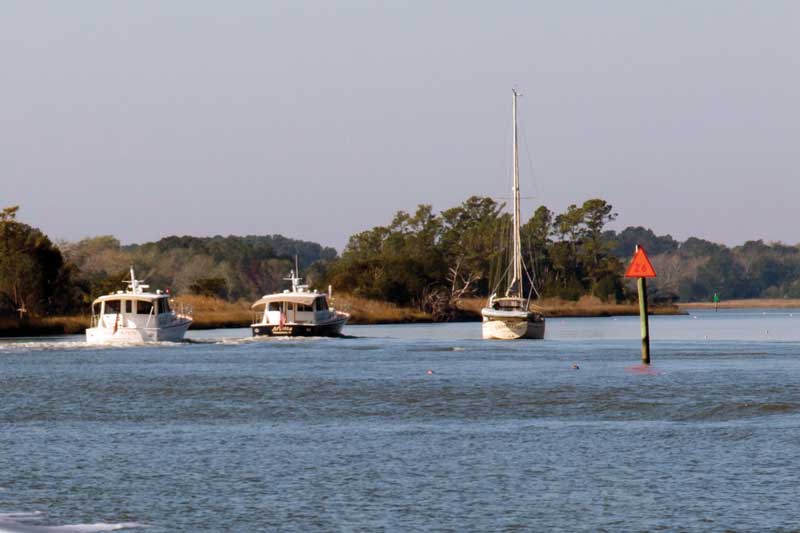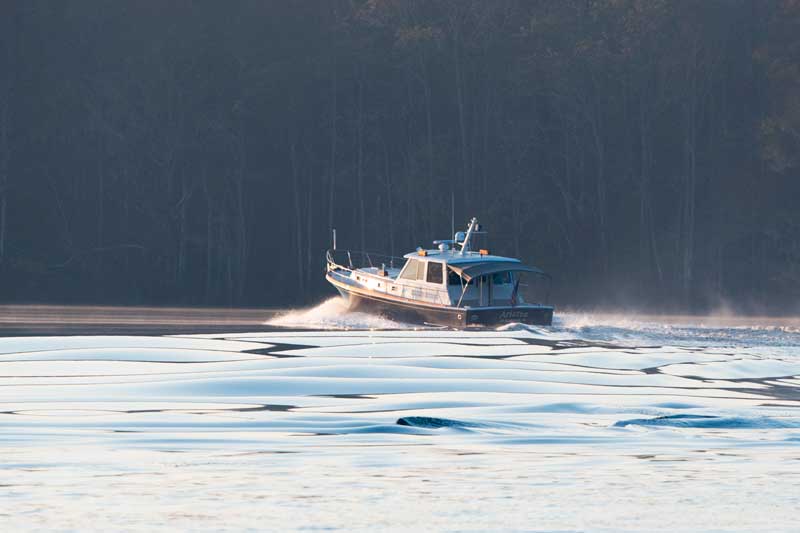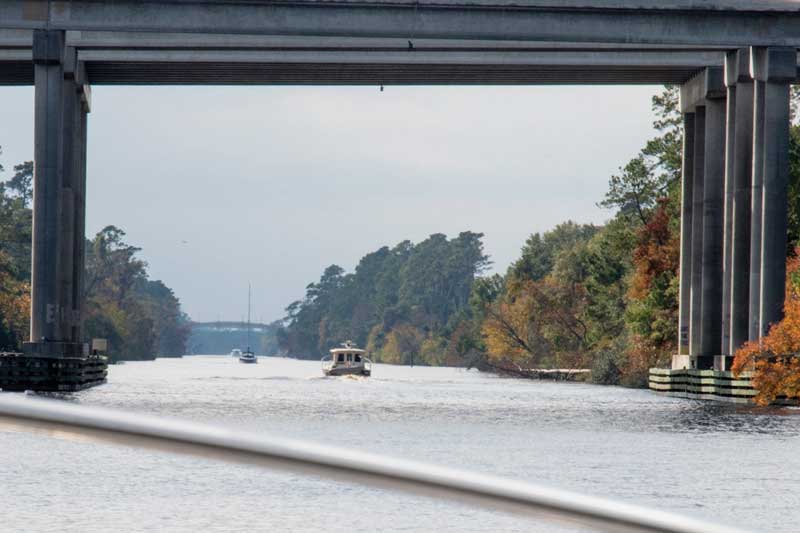Whether yours is a power or sailing vessel, the lure of traveling south on the ICW by boat to warmer winter climes can be compelling. It’s one of the East Coast’s finest boating adventures. You’ll discover beauty in the ever-changing landscape and delight in charming ports. You’ll also find currents, tides, weather, and narrow channels that will test your seamanship.

Then there are the other boats going a different speed than yours, often in narrow channels. Mistaken piloting in the Intracoastal Waterway (ICW) can be made by both sailing and power vessels that may lead to upset people and potentially dangerous grounding.
What’s best? Knowing the art of the “slow pass” where good communication inspires the slower boat to hold its course and throttle back while the faster boat passes with minimum wake. When done correctly, there’s both safe seamanship and respectful etiquette.

The USCG views the ICW as an inland waterway and as such, Navigation Rule 13 on overtaking applies. Practically speaking, this rule of law can be found in layman’s terms in the U.S. Aids to Navigation System booklet available both in print and online (by searching “U.S. Aids to Navigation System”). It states that the “give-way vessel” who is overtaking must yield to the “stand-on vessel” ahead who is being overtaken, and that sound signals are to be used to state its intention to pass to port (two short blasts) or starboard (one short blast). Acknowledgement via the same sound signal is expected from the stand-on vessel.
Using horns or sound signals is easy, right? Unfortunately, it’s rarely done on the ICW. Perhaps that’s because the ICW is a peaceful waterscape, or perhaps the give-way vessel does not want to appear to rudely honk at the stand-on vessel. Sound signals really should be used because those are the rules we agree to when operating a vessel in U.S. Inland Waters.
Regardless of signaling, the give-way vessel who is doing the passing is burdened and must safely maneuver around and keep safely out of the way of the stand-on vessel. The stand-on vessel is to maintain its course in the channel. That’s what’s published.

So, what happens most often on the ICW? The give-way vessel hails on Ch. 16. The give-way vessel might note the stand-on vessel’s name visually or with AIS, but often the call is “sailing vessel southbound approaching Red 156, this is … [vessel name].” Do not continue on Ch 16! Channel options include using Ch. 17 (often referred to as “up 1”); it’s one click up and transmits at only 1W which helps keep conversations localized. Once communicating, the two vessels can agree on a slow pass on port or starboard, whichever seems safest.
The give-way vessel’s wake should not jeopardize the safety of the stand-on vessel. The adage, “you are responsible for your wake” is very much at play. Just as important, the stand-on vessel must realize that if it does not slow down, the give-way vessel’s wake may be significant, even at a seemingly slow speed.
If the give-way vessel determines that the speed required to slowly overtake the stand-on vessel at its current speed might produce an unsafe wake, a call to the stand-on vessel might be, “If you will throttle back, I will be able to pass you with minimal wake.”

What happens if you hail, and no one responds? Although vessels less than 20 meters are not required to have a Bridge-to-Bridge Radiophone, most boats on the ICW do have VHF radios. Most skippers monitor and respond, but not all. If they don’t respond, however, it would seem you’re back to sound signals and hopefully everyone knows Navigation Rule 13. If they won’t slow down, there are difficult decisions to be made, which may include patiently waiting for a wider channel ahead.
If you’re navigating the ICW this year, experienced skippers hope you’ll get comfortable using the radio, sound signals, and especially learn the art of the slow pass. It will help make everyone’s day on the waterway that much more enjoyable.
By Steve Bedford and Lou Frank
About the Authors: Steve Bedford has been a pleasure boater for 30 years, both sail and power. He is a USCG captain and owns the SuperMax Anchor company. Lou Frank has cruised and raced sailing vessels since childhood and now enjoys cruising in a motor vessel. They both reside in Virginia’s Northern Neck, wintering aboard in warmer climates.